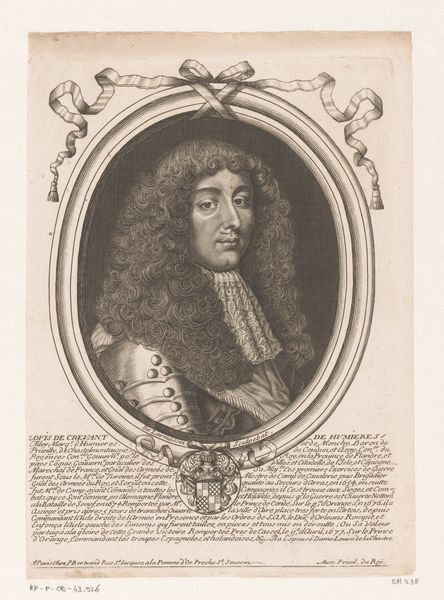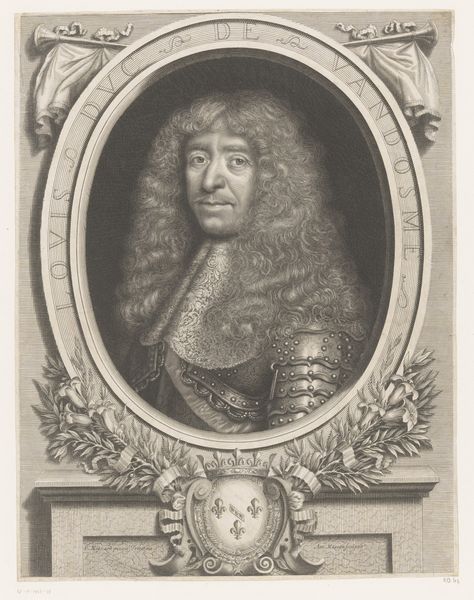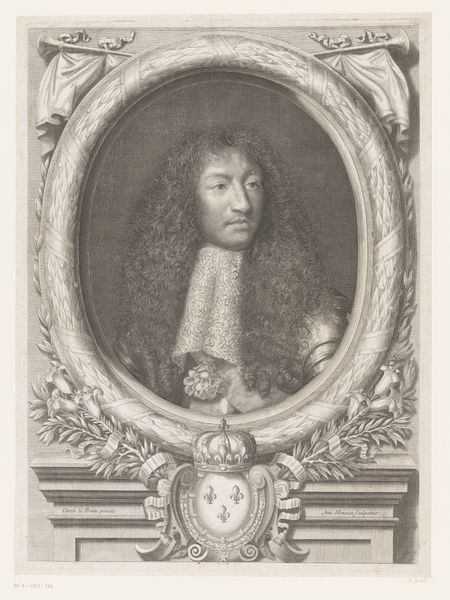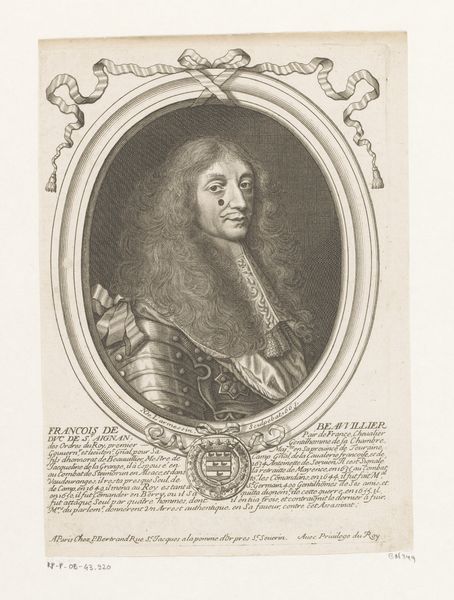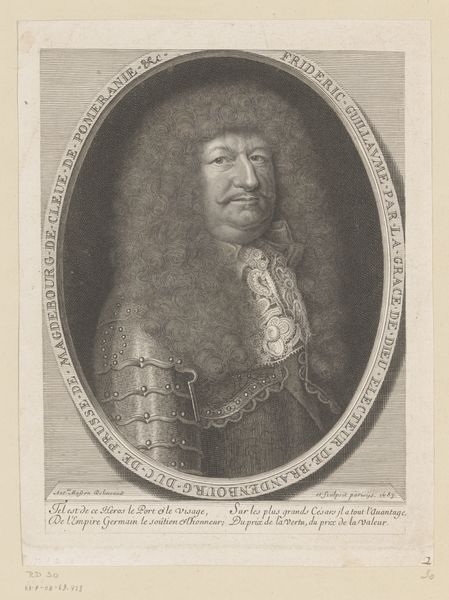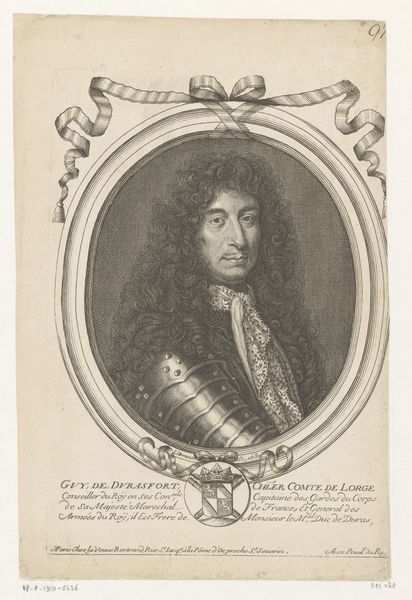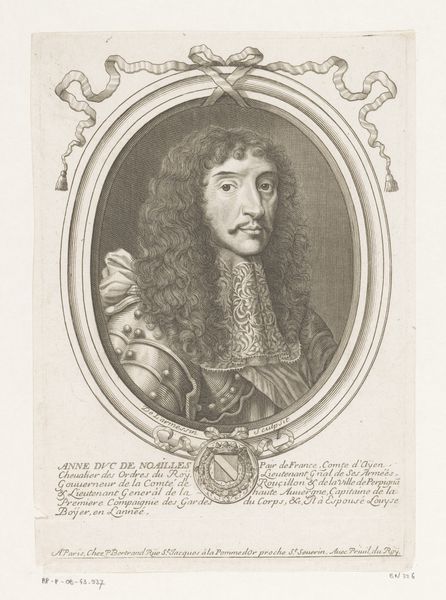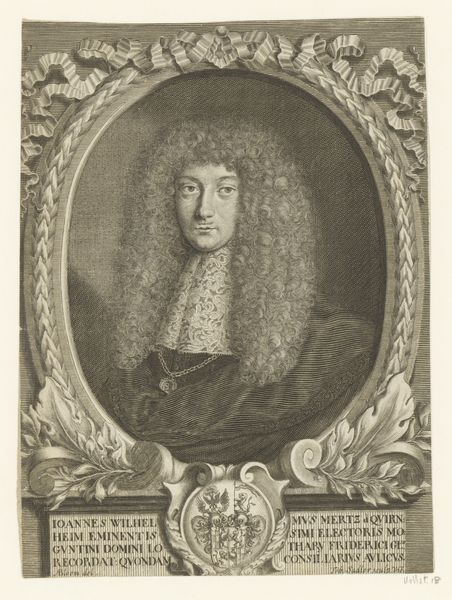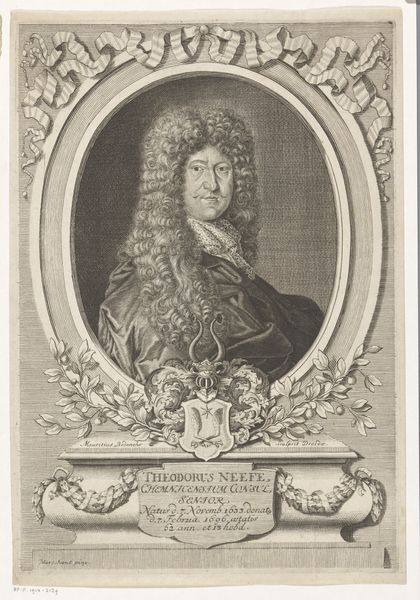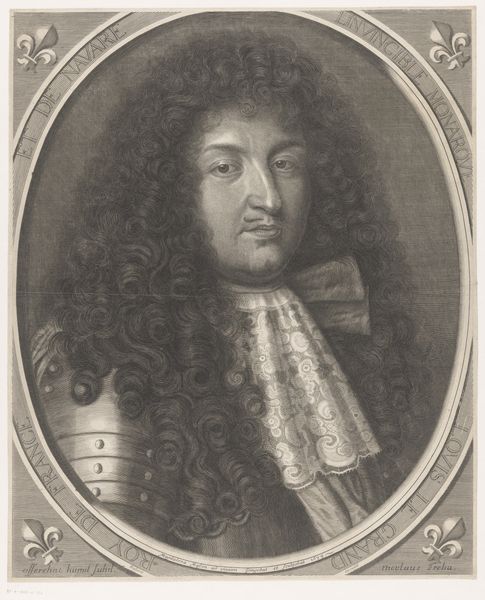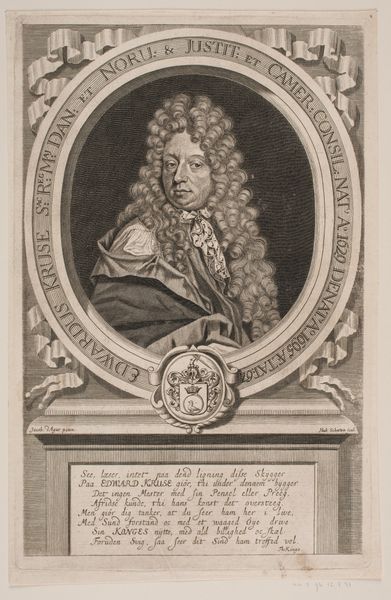
Portret van Frederik Willem, keurvorst van Brandenburg after 1678
0:00
0:00
nicolasdeilarmessin
Rijksmuseum
print, engraving
#
portrait
#
baroque
# print
#
old engraving style
#
engraving
Dimensions: height 236 mm, width 163 mm
Copyright: Rijks Museum: Open Domain
Editor: This is "Portrait of Frederick William, Elector of Brandenburg," an engraving by Nicolas de Larmessin, created sometime after 1678. The intricate detailing is really striking for a print. How would you interpret the historical relevance of this particular image? Curator: As a historian, what immediately grabs my attention is the way this print serves as a form of political communication. Consider the era: After 1678, printing became a key tool for projecting power and consolidating a ruler’s image. Notice how Frederick William is depicted – partially in armour, framed by elaborate ornamentation. What message do you think this portrait is meant to convey about his power and authority? Editor: It seems to be reinforcing his strength, both as a military leader and someone divinely appointed. The "by the grace of God" inscription emphasizes that idea, right? Curator: Precisely. Prints like these weren’t just portraits; they circulated widely, shaping public perception and legitimizing the ruler's position within the socio-political landscape. The museum where it now hangs—the Rijksmuseum—plays a key role itself in preserving and further shaping this perception, doesn't it? It asks, who gets remembered and how? Editor: Absolutely. So, this image is less about capturing a likeness and more about constructing and broadcasting an idea of leadership? Curator: Exactly! And that tells us so much about the function of art within the complex politics of 17th-century Europe, how the creation and dissemination of imagery reinforces the prevailing ideologies. Editor: That makes me see this portrait in a completely new light. I'll definitely be considering the role of prints in public image from now on. Curator: And that’s how historical context can open up our understanding of even seemingly straightforward portraiture.
Comments
No comments
Be the first to comment and join the conversation on the ultimate creative platform.
